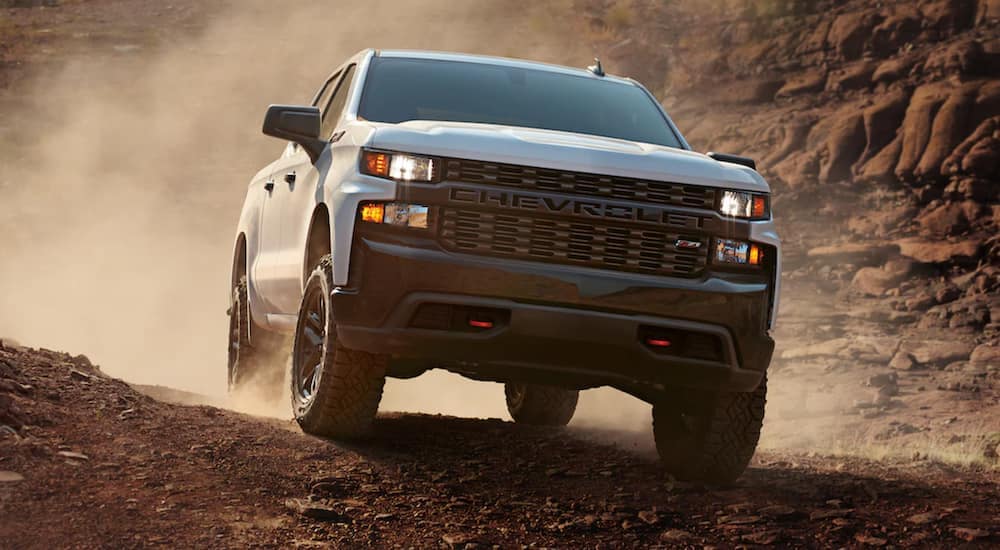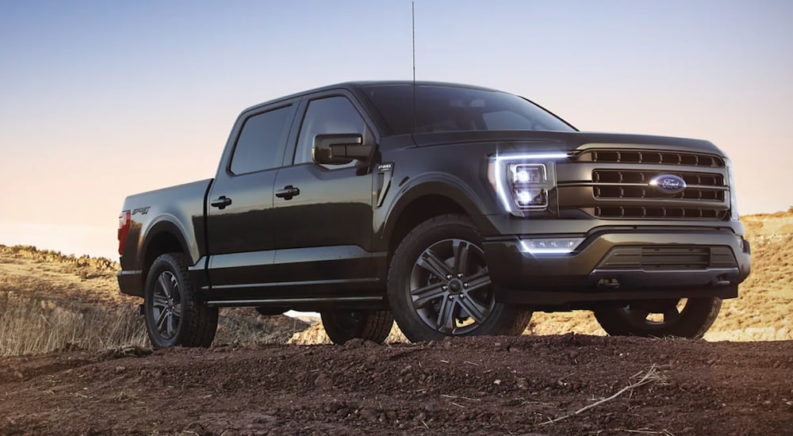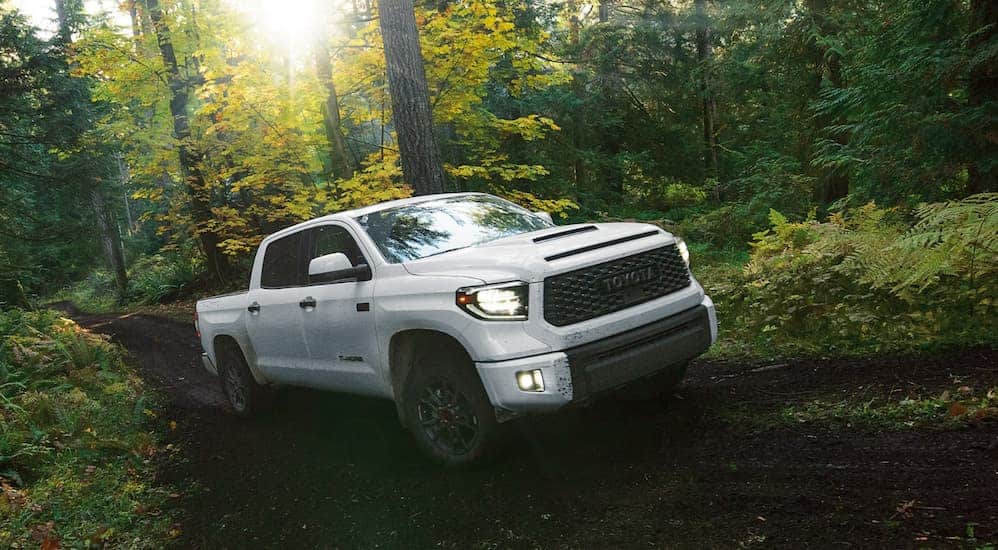With supply chain issues and a global computer chip shortage causing a bottleneck in the new vehicle market, used vehicles have become a hot commodity as of late. According to one study by the U.S. Bureau of Labor Statistics, the average price of used cars and trucks rose by more than 40 percent in just one year, making these pre-owned vehicles more valuable than ever. This red-hot market has led many drivers to reassess their own trade-in plans and ask the question, “should I sell my car?” Given the current demand, it seems like an easy answer, though many have quickly learned that when it comes to used vehicles, not every model is created equal.
From mileage and condition to accessories and even color, there are lots of factors that can affect a vehicle’s resale value. Sometimes it depends on the brand, as some automakers have a reputation for quality construction that goes a long way in winning consumer confidence. Sometimes it’s all about the type of vehicle. For example, we’re currently in something of a pickup renaissance, with low-mileage, well-kempt trucks commanding unheard-of resale values in recent years. Most new vehicles will retain around 43 percent of their value over the first five years of ownership, but many of today’s popular pickup models are blowing this average out of the water, with five-year resale values from 56 to 70 percent. Let’s look at some factors that play into a pickup’s resale value and share a few tips on how to get the most for your truck when it comes time to sell.

Pickup Popularity
There are a number of reasons why trucks, in particular, do such a good job of retaining their value, but the most important factor is reliability. Trucks are often purchased with dual purposes in mind: they’re not only a way to get from Point A to Point B, they’re also used to haul, tow, and go places where normal two-wheel drive vehicles can’t. For these reasons and more, reliability is particularly important to many pickup owners, leading automakers to place an emphasis on quality construction from the get-go. Sure, this desire for reliability isn’t unique to truck drivers, but the numbers speak for themselves. According to one study by Consumer Reports, the average truck outlasts the average car by 50,000 miles and three years. Given these impressive stats, it’s little wonder that 14 of the top 16 longest-lasting vehicles on the road are either pickup trucks or truck-based, body-on-frame SUVs.
This reputation for reliability means there’s almost always a healthy demand for used pickups on the resale market. This is especially true at times like today when a lack of new truck inventory leads to a huge boom in resale value for used models. Trucks are also drawing on a wider consumer base than ever before, with more and more drivers being won over by the functionality, comfort, and value of truck ownership. Some brands perform better than others when it comes to resale value, but in the truck world, Ford is among the undisputed leaders.
The American automaker had three vehicles placed in its Best Resale Value Top 10 for 2022, ranking with the brand’s compact pickup offering, the Ford Maverick, retaining 59.5 percent of its value over a five-year period. Ford’s popular F-Series pickups and the midsize Ranger also made the top 10 with five-year resale values of 57.3 and 56.7 percent, respectively. It’s hard to argue against pickups from a practicality standpoint, as some studies suggest that a truck is almost twice as likely to hit the 200,000-mile mark than a car.
Safety is another factor that’s won over many pickup drivers. With sturdier frames, heavy-duty construction, and a higher ride height, today’s pickups are some of the safest vehicles on the road. Weight is another big factor when it comes to safety, with a heavier vehicle less likely to experience life-threatening damage in the case of a collision. The average pickup weighs between 5,000 and 7,000 pounds, whereas many midsize sedans typically weigh around 3,000 pounds. When you’ve got valuable cargo like kids and family on board, this difference can offer some valuable peace of mind. Lastly, today’s pickups have embraced much of the advanced safety technology that’s long been prevalent in other categories, including smart brakes, stability control, and a healthy complement of airbags.
How to Keep Your Truck in Trade-in Shape
If you’re looking to keep your pickup in the type of condition that’s sure to command a reasonable resale price, there are a few simple steps you can take.
Change Oil: This is one of the most common maintenance tasks you can perform on your vehicle, and for good reason. There are few easier or better ways to extend the life of your engine than an oil change, which is recommended every 3,000 to 5,000 miles on most vehicles. Fresh oil helps to maintain engine lubrication, keep everything nice and cool and remove sludge and other engine build-up. Regular oil changes won’t only improve your vehicle’s value when it comes time to sell, it’ll also benefit your wallet in the short run by improving the vehicle’s fuel efficiency. Follow the maintenance schedule in your owner’s manual for specific guidance on when to change your oil, and keep a log of all oil changes so any potential buyers can see that the vehicle’s been well maintained.
Rotate Tires: Rotating your tires on a regular basis can go a long way in extending not only the life of the tires themselves but the vehicle as a whole. Tires are almost inevitably going to wear unevenly, but with regular tire rotations, it’s easy to mitigate the long-term damage this can cause. It’ll make for a smoother ride, put less stress on the suspension and help you to diagnose any alignment issues to boot. Follow your vehicle’s maintenance schedule for guidelines on when to rotate your tires, or simply make a habit of having it done at every oil change.
Tire Balance/Alignment: Between rough, bumpy roads, loaded-down beds, and long-range towing, trucks are often put through some grueling driving conditions. While modern pickups are designed to take this sort of abuse, it can wear down key components like tires, wheels, and suspension. Balancing your tires ensures that all four wheels are taking on their fair share of the truck’s weight, and improperly balanced wheels can lead to headaches like vibrations, tire wear, and suspension damage. It can also throw off your vehicle’s alignment, which can cause the vehicle to pull to one side resulting in an unsafe, unresponsive experience behind the wheel as well as taking a toll on gas mileage. While tire balancing and alignment are two different tasks, they often go hand-in-hand, so try to get them done at the same time.
Check Fluids: Aside from motor oil, there are a few other key fluids that you’ll want to stay on top of if you’re looking to keep your vehicle’s resale value up. Coolant is one such fluid as it plays an important role in keeping your truck’s engine from becoming overheated. Consult your vehicle’s maintenance schedule for a guide on when to replace your coolant or make a habit of checking it whenever you have the hood open. While coolant levels shouldn’t drop noticeably unless there’s a leak in the system, the fluid can become gunked up over time and reduce performance. Drain and replace coolant whenever it becomes too fouled, and keep an eye on other key fluids like brake fluid, transmission fluid, and power steering fluid.
Change Air Filter: The air filter helps to remove dirt, dust, and other debris from the air before it reaches your engine. While a clean air filter helps every type of vehicle run better, they can be especially vital in pickups that often encounter dusty off-road conditions. Air filters are cheap and easy to replace and can have a noticeable effect on engine performance and gas mileage, making this particular maintenance task a no-brainer.
Planning Ahead
There are a number of factors to consider when it comes time to sell your used vehicle. We touched on some basic maintenance tasks in the previous section, but your vehicle’s mileage can be another important element to consider. As a general guideline, the 100,000-mile mark is a point of no return for many buyers. While 100,000 miles can look a lot different on different types of vehicles depending on how they were built, driven, and maintained, buyers are going to be less likely to shell out big bucks for vehicles that have started to creep into six-figure territory.
The average driver puts around 13,000 miles on their vehicle per year, but there are some ways to keep that number down. Try to batch multiple errands or tasks into one trip whenever possible and if you’re taking a long road trip, consider renting a vehicle instead of driving your own. This might be costly in the short term, but the value of not having that cross-country road trip reflected on your odometer could pay dividends when you go to sell.
Maximizing your trade-in value starts the first time you start looking at a new vehicle. While you might not end up trading in the vehicle for years to come, there are a number of decisions you’ll make at the dealership that could have a dramatic long-term effect on your resale value. It really comes down to options: knowing what the next buyer might value in a used vehicle versus those components that might actually make your vehicle a less attractive prospect for buyers.
Certain features are always popular, such as automatic transmissions, anti-lock brakes, cruise control navigation systems, and sunroofs, whereas components like performance-based accessories might actually turn off some prospective buyers. That high-end stereo system or spoiler you added might fit your own unique sense of style, but you’ll likely never recoup the investment as they might not be everyone’s cup of tea. Color is another important factor to consider: neutral colors are more likely to remain popular over time as opposed to flashy, bright, or unique colors, which often have a much shorter shelf life.
What Can Affect Trade-In Value?
If you’re planning to eventually resell a vehicle, it’s important to leave as little evidence of your ownership as possible. Sure, a quick trip to the car wash and a $100 detailing job can increase a vehicle’s curb appeal, but it won’t erase years of abuse, neglect, and fast food stains. The issue is more than just a cosmetic (or olfactory) one: a grimy, poorly maintained interior will send a general message of neglect to a buyer, who might start to question if the vehicle’s mechanical components have been as forsaken as its upholstery.
Try to limit how much you eat or drink in the vehicle, invest in a heavy-duty rear seat cover if you’re regularly bringing pets along for the ride, and don’t smoke in the vehicle unless you want to limit your prospective buyers to fellow tobacco enthusiasts. If you have leather seats, keep them clean and apply treatment from time to time. They can be a big plus as a selling factor, but not if they’re full of stains, rips, and other blemishes.
When it comes to your vehicle’s exterior, it’s all about curb appeal. Those dings and dents that you’ve become accustomed to will stick out like a sore thumb to discerning buyers, so park the vehicle in a protected space whenever possible and repair small defects before they start to expand and begin to rust out the metal underneath. Also, remember to remove any bumper sticker or other pieces of personal flair before you put the vehicle on the market, but not every driver out there shares your appreciation for that particular band.
Despite all your best efforts, the single most important factor in a used vehicle sale might be something you have no control over: current market conditions. If a dealer already has a backlog of unsold vehicles on the lot and you roll in with the same model, don’t expect to leave with a very generous offer. For this reason, it often pays to shop around and bring the vehicle to a number of different dealers in the area. Start with those that specialize in the same brand of vehicle that you’re trying to sell, as in some cases, it might qualify for the dealer’s Certified Pre-Owned program and net a much higher offer. Climate and season can also be major factors, so don’t be surprised if you have trouble selling your convertible in January.
Of course, it might all come down to the person who’s in charge of appraising your vehicle, so if you feel like you’re being low-balled by a salesperson, shop around until you get a better idea of your vehicle’s true value. Go into the exchange armed with all the information you can by valuing your vehicle on sites like Kelley Blue Book, but be honest with yourself. While it’s tempting to overstate your vehicle’s condition when using such trade-in sites, the reality is that 80 percent of used vehicles on the road skew closer to the “fair” category than the “good” or “excellent.”
With a little planning and some self-discipline, it’s easy to maximize the value of your used pickup. If properly maintained, these vehicles are some of the most valuable on the road, with their reputation for reliability, quality construction, and performance allowing many pickups to essentially sell themselves. If you start doing your research on trade-in values early on in the process – as in, before you’ve even bought the truck in the first place – then you’ll have a far easier time unloading it when it comes time for an upgrade. While today’s historically high resale values won’t last forever, these guidelines will serve you well regardless of the current market conditions. Proper maintenance is key, but so are less concrete factors like climate, inventory, and just how stingy the buyer is feeling on any given day. Keeping an exhaustive record of every oil change, repair, and fender bender can go a long way in improving the buyer’s confidence and net you more cash-in-hand when the sale is complete.





